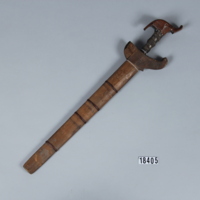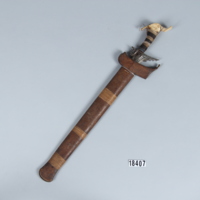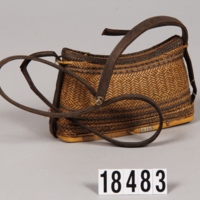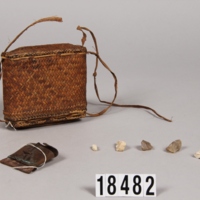Sword without Sheath (Kampilan)
Text
RJM 591. Annotation 2021. Identified as a Kampilan by Lorenz Lasco and Corazon Alvina). A long single-edged steel blade, with the blade starting thicker and more narrow at the forte and getting thinner and wider towards a truncated point, ending in a small spike at the end - typical of most swords identified as a kampilan. The wooden hilt is carved from a type of native hardwood and used to counterbalance the large blade . Its bifurcated end is said to depict a naga snake with open mouth or can also be interpreted as the bakunawa - a gigantic sea serpent, considered god of the underworld and believed to bestow its fearsome powers upon the wielder in battle (Casal 1981: 175-178) .The kampilan sword was primarily used by noblemen. The longest sword among the weaponry of Muslim ethnic groups of the Southern Philippines, it was favored especially by the Maranao and the Maguindanao of Mindanao. There are remnants of a 'munsala" which were used to tie the hilt to one hand in order to prevent slippage. (Lawrence 2009: 18-19) Shorter munsala also served decorative or talismanic purposes. The hilt is decorated with carved floral and geometrical patterns in the so-called okir style; . (Oliver Moiseanu 2009:65).
Share this



